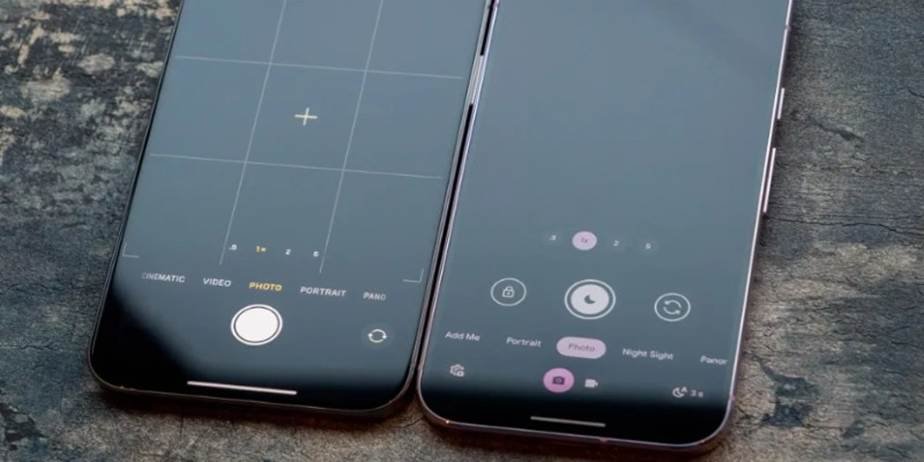Smartphone photography isn’t just about capturing moments anymore—it’s about turning those moments into professional-grade art. With each passing year, two tech titans, Google and Apple, keep raising the bar. Enter the Google Pixel 9 and iPhone 15—the latest offerings from brands that dominate the conversation when it comes to phone cameras. But which one actually takes better photos? This isn’t just about megapixels or flashy marketing; it’s about real-world performance, details, and consistency.
In this article, we’re going beyond the spec sheets and diving into the real photography experience these phones offer. From low-light shots to color science, let’s figure out which device deserves a spot in your pocket.
Camera Specs Breakdown: On Paper Power
The first step in comparing the Google Pixel 9 vs. iPhone 15 is understanding what’s inside their camera modules. Google’s Pixel series has always been known for computational photography. Even with fewer lenses, it delivers results that often outshine the competition. The Pixel 9 continues this legacy, boasting an upgraded primary sensor with a larger aperture for better low-light performance and improved AI-driven post-processing.

On the flip side, the iPhone 15 sticks to its signature triple-lens setup—wide, ultra-wide, and telephoto. Apple’s hardware is top-tier, but what really shines is the seamless integration with iOS. Features like Smart HDR and Photonic Engine help balance lighting and enhance detail without making photos look overly processed.
On paper, both phones are neck-and-neck, but let’s face it: numbers don’t always tell the full story.
Daylight Photography: Clarity, Detail, and Colors
Both phones flex their muscles in different ways when it comes to daylight photography. The Google Pixel 9 leans into contrast-heavy shots, delivering vibrant images with rich shadows and textures. Google’s AI tweaks scenes automatically, making skies bluer and greenery more vibrant without looking artificial.
The iPhone 15, however, takes a slightly different approach. Apple’s color science is all about natural tones and softer contrast. The result? Photos that feel closer to what the human eye sees. This makes the iPhone ideal for photographers who prefer true-to-life colors with minimal post-editing.
Both phones handle dynamic range beautifully, but if you’re after more visually striking images straight out of the camera, the Pixel 9 might have the edge. On the other hand, the iPhone 15 wins for those who value accuracy over drama.
Low-Light Photography: Night Owls, Beware
Low-light photography is where things get interesting. Google’s Night Sight has been the industry benchmark for years, and the Pixel 9 takes it even further. It captures sharp, noise-free images even in near-darkness, preserving both color and detail exceptionally well.

The iPhone 15 isn’t far behind, though. Apple’s Night Mode automatically activates when the lighting dips, producing clear and well-exposed images without much user intervention. The iPhone also handles highlights better in some cases, reducing the likelihood of blown-out streetlights or reflective surfaces.
In extremely dark conditions, the Pixel 9 pulls ahead by capturing more detail without sacrificing sharpness. However, the iPhone’s processing delivers a slightly warmer tone, which some users might prefer for nighttime cityscapes.
Portraits and Selfies: Blurred Backgrounds and Skin Tones
Portrait photography isn’t just about blurring the background anymore; it’s about depth, realism, and capturing the smallest details. The Google Pixel 9 uses AI-based depth mapping to create professional-looking bokeh effects. It also excels in skin tone accuracy, a focus area Google has heavily invested in with its Real Tone technology.
The iPhone 15 continues its tradition of smooth, natural-looking portraits. Apple’s depth sensors work seamlessly with the A16 Bionic chip to deliver lifelike edges and subtle background separation. Selfies, too, benefit from Apple’s attention to detail, especially in edge detection and lighting adjustments.
If you take a lot of portraits or selfies, the choice comes down to personal taste. Prefer punchy, contrast-rich images? Go with the Pixel 9. If your style leans toward soft, natural tones, the iPhone 15 won’t disappoint.
Video Performance: Lights, Camera, Action!
Apple has traditionally reigned supreme in video, and the iPhone 15 is no exception. With ProRes video recording, Dolby Vision HDR, and seamless stabilization, the iPhone continues to be the go-to device for vloggers and mobile filmmakers. Colors are balanced, transitions are smooth, and the audio capture is surprisingly clear.

The Google Pixel 9 isn’t lagging, though. It offers 4K video at 60fps, advanced stabilization, and AI-driven features like Audio Zoom and Live HDR+. The video quality is excellent, but Apple’s color grading and superior dynamic range give the iPhone a slight edge for professional use.
If video is your primary focus, the iPhone 15 remains the king—but the Pixel 9 is quickly closing the gap.
Extra Features: Beyond the Basics
Both phones offer extra perks that could tip the scales depending on your needs. The Google Pixel 9 features exclusive editing tools like Magic Eraser and Photo Unblur, making post-editing effortless for casual users. It also integrates well with Google’s suite of apps and services, which is a plus for Android users.
The iPhone 15 brings seamless ecosystem integration. If you’re already invested in Apple’s world—using a MacBook, Apple Watch, or iPad—switching to anything else feels clunky. Features like AirDrop, iCloud syncing, and FaceTime enhance the overall experience without adding any learning curve.
Battery Life and Storage for Shutterbugs
A great camera setup means nothing if your battery dies mid-shoot. Fortunately, both phones handle battery life well, even with intensive photography sessions. The Pixel 9 has improved battery optimization, especially during extended use of camera features.

The iPhone 15 also offers reliable battery performance, with smart power management during video recording and photo editing. In terms of storage, both devices provide multiple tiers, but the iPhone’s iCloud storage plans might be more convenient for users already in the Apple ecosystem.
Conclusion
In the Google Pixel 9 vs. iPhone 15 battle, the winner depends on your priorities. The Pixel 9 shines with its AI-driven editing tools, vibrant contrast, and low-light photography skills, making it perfect for creative shooters. The iPhone 15, however, offers natural colors, top-notch video capabilities, and seamless ecosystem integration, ideal for those who value consistency and ease of use. Both are exceptional—your choice ultimately comes down to personal preference and how you use your camera.
